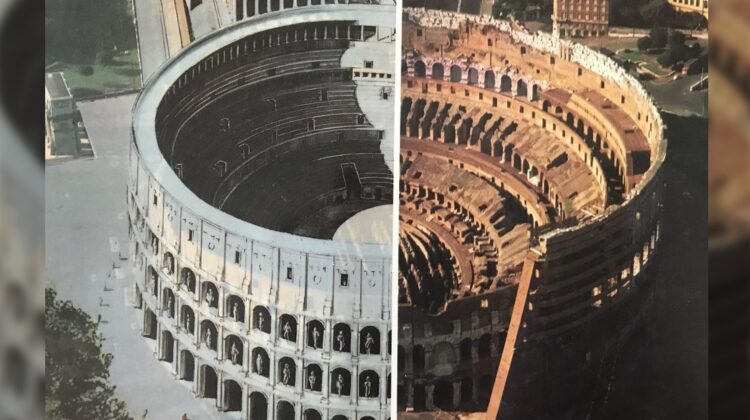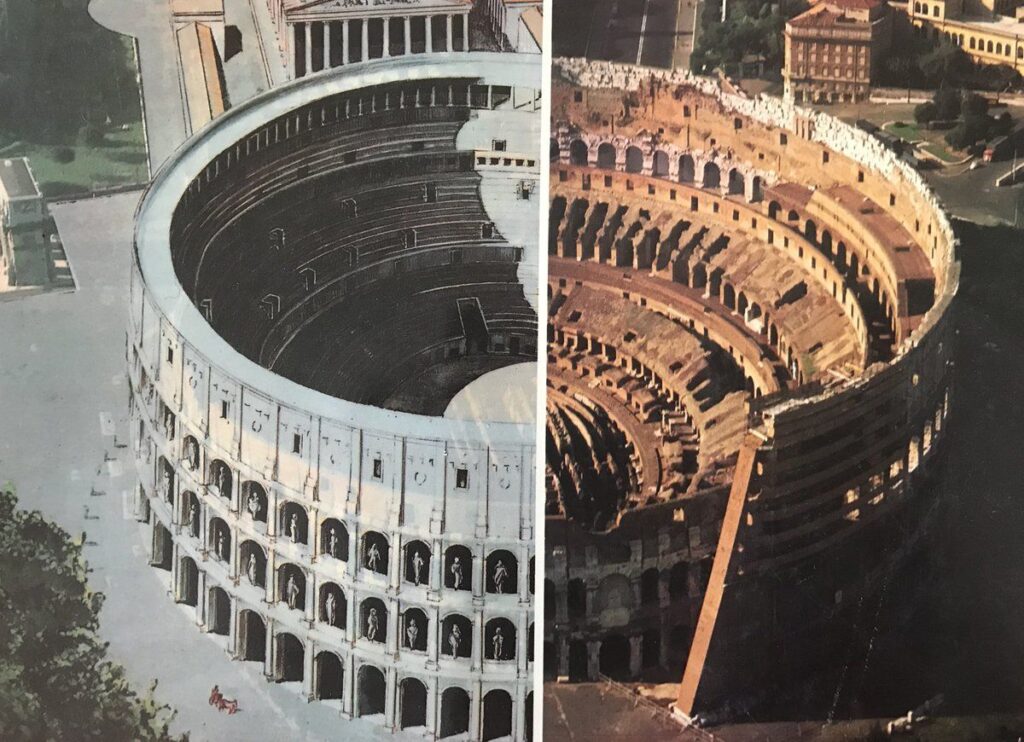
The Colosseum has 80 entrance arches and it could accommodate around 87,000 spectators with tiered seating all the way around. It’s the biggest amphitheater in the world: 189 meters long, 156 meters wide, and 50 meters tall.
The Colosseum, located in the heart of Rome, Italy, is an elliptical amphitheater that stands as an enduring testament to the grandeur of ancient Rome. As the largest amphitheater ever constructed, it has earned its place as one of the most iconic landmarks in the world.
Construction of the Colosseum began between 70 and 80 AD, under the order of Emperor Vespasian. His son, Titus, completed the construction, and it was formally dedicated in 80 AD, marked by an extravagant series of games that lasted an astonishing 100 days.
This colossal structure is composed of concrete, stone, and brick, and it boasts remarkable dimensions – 189 meters in length, 156 meters in width, and towering to a height of 50 meters. Its striking facade is adorned with 80 entrance arches, welcoming spectators from all directions.

Throughout its storied history, the Colosseum played host to a myriad of events. From epic gladiatorial contests that showcased the courage and skill of these ancient warriors, to heart-pounding chariot races that captivated the masses, the Colosseum was a hub of entertainment. It also served as the stage for brutal animal fights, public executions, and religious ceremonies.
The Colosseum represents a remarkable feat of engineering, demonstrating the incredible prowess and ingenuity of the Roman people. It was constructed using innovative architectural techniques, including arches and vaults, which enabled the Romans to create a vast and durable structure without the use of metal.

Originally, the Colosseum’s exterior gleamed with the opulence of marble. However, during the Middle Ages, the marble was stripped away and repurposed for the construction of other buildings in Rome.
Over the centuries, the Colosseum endured the ravages of earthquakes and fires, which took their toll on this architectural wonder. However, through meticulous restoration efforts, it has been preserved, and it now stands as one of the foremost tourist attractions in Rome, attracting visitors from all corners of the globe.

The Colosseum is more than just a physical structure; it is a symbol of Rome and the Roman Empire. It serves as a poignant reminder of the power, might, and grandeur of ancient Rome. However, it also offers a sobering insight into the harsh realities of Roman society, where brutal spectacle and public executions were a part of daily life.
In essence, the Colosseum stands as a living testament to our shared cultural heritage and the importance of preserving historical relics that continue to inspire and captivate us. It remains a timeless marvel, an architectural masterpiece, and a cornerstone of the rich tapestry of human history.

Leave a Reply